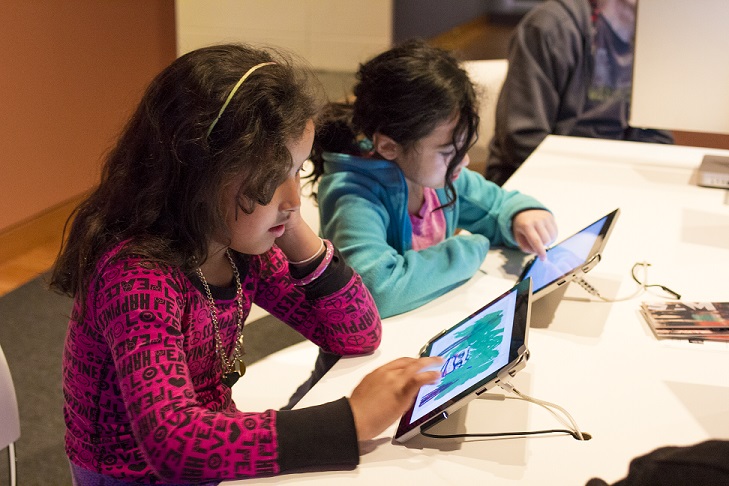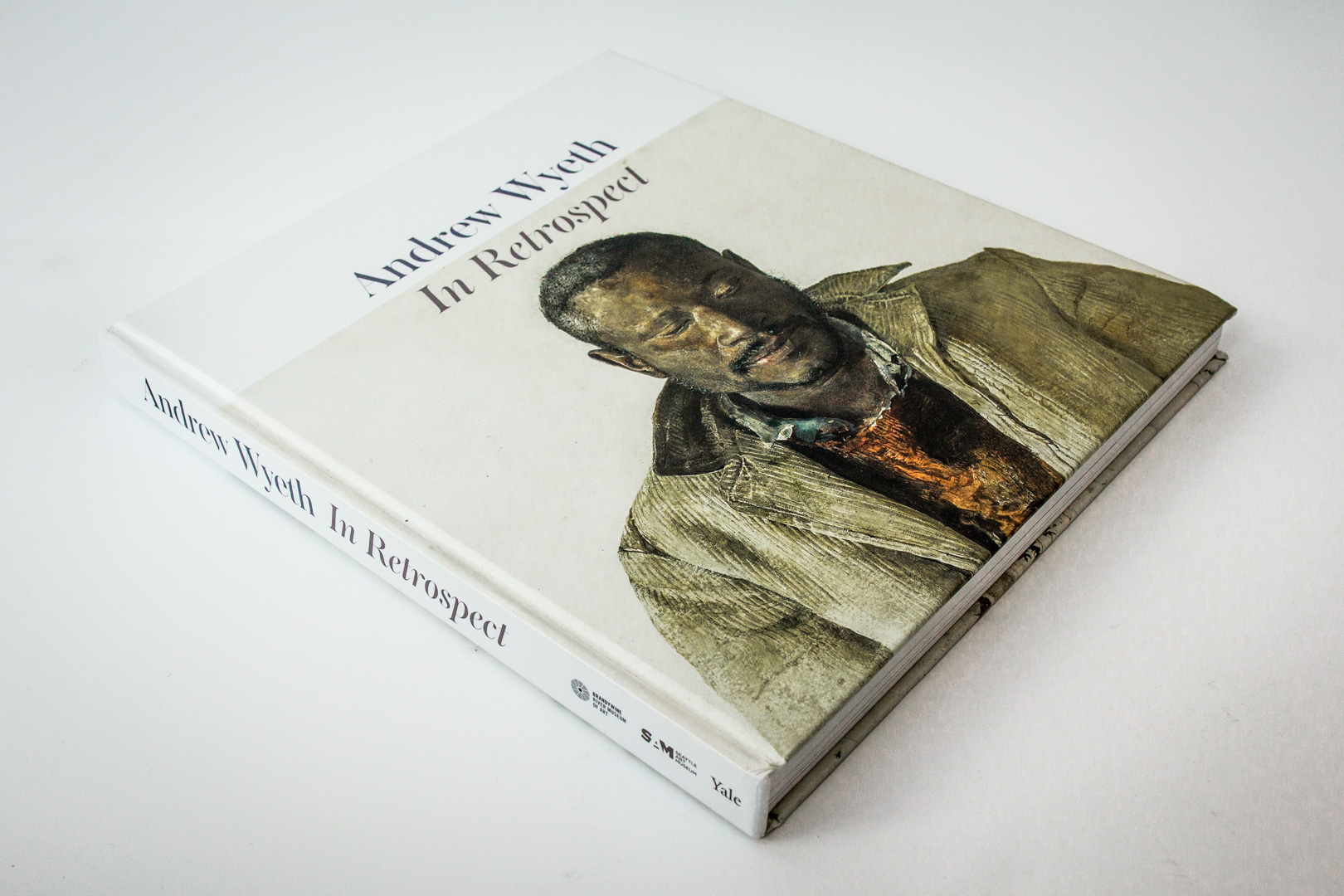

Presenting 110 of Wyeth’s finest paintings and drawings, this first major retrospective since the artist’s death challenges long-held critical notions of Wyeth as a realist and offers unexpected perspectives on his art, legacy, and influences.
Organized by the Seattle Art Museum in partnership with the Brandywine River Museum of Art, and including rarely seen loans from the Wyeth family, the exhibition follows the evolution of one of America’s most famous painters to reveal a deep well of humanity and imagination.
![]()
![]()

with N.C. Wyeth • Walter Anderson • Allan Lynch • Christina Olson • Karl and Anna Kuerner • Willard Snowden • Helga Testorf • Betsy Wyeth • Adam Johnson • Bill Loper
The only artistic training Andrew Wyeth receives is in the studio of his father, N.C. Wyeth, a famous illustrator. His apprenticeship begins at the age of fifteen. The inhabitants of Andrew’s childhood home of Chadds Ford, PA, and his summer home in Cushing, ME, fascinate him as he experiences, imagines, and portrays the lives that lend contours to the surrounding land. By the time he is 20 the young artist sells out his first New York exhibition of watercolors. Four years later he exhibits works that begin to define his signature style: highly detailed, strangely hyper-realistic paintings in egg tempera. These large temperas show for the first time at the Museum of Modern Art in 1943. With these early successes, Andrew Wyeth begins to emerge from the shadow of his father’s art fame.
WATCH EPISODE
At eight years old Andrew Wyeth sees King Vidor’s film, The Big Parade, with his father. Over his lifetime he watches it hundreds of times, filtering his perception of the world around him through this cinematic lens. Images from the film emerge in Wyeth’s paintings as he grieves the tragic loss of his father, who is killed in Chadds Ford by an oncoming train near the neighboring Kuerner cattle farm on October, 19, 1945. The Wyeth family is forever left wondering, was this an accident or suicide? Kuerner’s Hill is associated with death, and Andrew Wyeth is devoted to painting the landscapes and locals as never before.
WATCH EPISODE
Andrew Wyeth completes his first portrait of Christina Olson, who suffered from a degenerative muscle disorder that left her unable to walk, in 1947. When his next painting of her, Christina’s World, is acquired by the Museum of Modern Art in 1948, Wyeth’s fame grows. As a subject for paintings, Christina Olson uniquely engages Wyeth’s imagination. She is his friend and muse. With her brother, Alvaro, Christina’s stalwart life takes on the qualities of Maine’s rock-bound coast. What will happen when these protagonists of his painted world vanish from Wyeth’s reality? Wyeth paints Christina and her house in Maine every summer until she dies in January 1968 at age 74.
WATCH EPISODE
Linked forever to the site of Andrew Wyeth’s father’s untimely death are Karl and his wife, Anna Kuerner, whose farm is the location of the often painted Kuerner’s Hill. In 1948 Wyeth paints his first portrait of Karl, a machine gunner in the German army in WWI. His portraits of the farm and the aging couple are numerous. Over the years Wyeth imbues details with layered meaning as he contemplates mortality and love, the killer in Karl—forever a brutal shadow of Andrew’s own father—and the withdrawn depression of Anna, who refuses to pose for him. Theirs is a life of survival on the farm where death is often nonchalant and love is tenuous.
WATCH EPISODE
Hard-luck drifter, Willard Snowden moves into Andrew Wyeth’s studio in 1958 and lives there for nearly fifteen years, frequently modeling for Wyeth, who enjoys painting him while Snowden regales the artist with stories. Wyeth and Snowden have a bond: Snowden poses and an obliging Wyeth supplies him with wine. Snowden is a World War II veteran and, sadly, an alcoholic, whose aging, expressive face fascinates Wyeth. The relationship of Wyeth to this model, as with many of Wyeth’s characters, begs the question: is Andrew Wyeth capturing or creating reality?
WATCH EPISODE
Andrew Wyeth becomes enchanted by Helga Testorf, who begins to work for the aging Kuerners as household help in 1970. In the attic of the Kuerner home he paints Helga, a married woman, in secret from his wife, Betsy—a secret he keeps for almost fifteen years. He hides these studies, often nude and erotic, of Helga at the Kuerners’. He also paints Helga in his sister Carolyn’s painting studio, adjacent to their father’s old studio. The secret of Helga adds to the psychological tension of all Wyeth’s paintings in these, the Helga years.
WATCH EPISODE
“I am an illustrator of my own life,” Wyeth says. Many of his friends and muses dead, Andrew Wyeth paints his Chadds Ford characters into Snow Hill a final tempera beginning in 1987, the year of his 70th birthday. Betsy Wyeth likens her husband to Swedish director, Ingmar Bergman: “He’s creating a world they [his models] don’t realize and they’re acting out a part without any script.” His models, living and dead, dance on Kuerner’s Hill and recall Bergman’s dance of death from the iconic final scene of The Seventh Seal. Just as Death dances the players off to their graves in the film, Wyeth dances his characters off to their art-muse graves, and they never again appear in his paintings. Wyeth moves toward a freer use of tempera washes and watercolor and infuses an increasingly mystical quality into his subtle and haunting symbolism from that point forward. Wyeth continued to paint until his death in 2009 at age 91.
WATCH EPISODE
Listen to an informative audio tour on your own device or rent an audio wand. Audio tour produced by Seattle Art Museum and Brandywine River Museum of Art with Acoustguide. This audio guide is sponsored by KCTS 9.
Free app available for Windows, iPhone, and Android smartphones. Download STQRY from your app store. In the STQRY app, select “Seattle Art Museum,” then “stories” tab, then the “Wyeth” mobile tour.
Dial 206.866.3222 for the free tour. Enter the numbers next to the artworks, then press the # key.
Listen on Soundcloud and download the mp3s for free.
Available for rent for $5 ($4 for members) at the entrance to Andrew Wyeth: In Retrospect on the fourth floor on a first-come, first-served basis.
There is an additional audio tour with verbal descriptions of the works for visitors who are blind or partially sighted (or anyone seeking an in-depth guided look at the objects). Please see SAM staff for more information.
Create a digital painting when you visit the exhibition! To find a copy of your creation, visit the gallery here.

Purchase your copy of the exhibition catalogue in the SAM Shop on the ground floor or the exhibition shop on the fourth floor.

Images: Lobsterman (Walt Anderson), 1937, Andrew Wyeth, American, 1917–2009, Watercolor on paper, 21 1/4 × 27 3/4 in., Brandywine River of Art, Chadds Ford, Pennsylvania, Anonymous Gift, 2013. Winter 1946, 1946, Andrew Wyeth, American, 1917–2009, tempera on hardboard panel, 31 ⅜ x 48 in., North Carolina Museum of Art, Raleigh, Purchased with funds from the State of North Carolina, © 2017 Andrew Wyeth / Artists Rights Society (ARS). Wind from the Sea, 1947, Andrew Wyeth, American, 1917–2009, tempera on hardboard panel, 18 ½ x 27 ½ in., National Gallery of Art, Washington, D.C., Gift of Charles H. Morgan, © 2017 Andrew Wyeth / Artist Rights Society (ARS). The Kuerners, 1971, Andrew Wyeth, American, 1917–2009, drybrush watercolor on paper, 26 ½ x 40 ⅛ in., The Andrew and Betsy Wyeth Collection © 2017 Andrew Wyeth / Artist Rights Society (ARS). The Drifter, 1964, Andrew Wyeth, American, 1917–2009, drybrush watercolor on paper, 22 ½ x 28 ½ in., Collection of Phyllis and Jamie Wyeth, © 2017 Andrew Wyeth / Artist Rights Society (ARS). Black Velvet, 1972, Drybrush watercolor on paper, 21 1/4 x 39 1/2 in., Private collection, © Pacific Sun Trading Company. Courtesy of Frank E. Fowler and Warren Adelson. Snow Hill, 1989, Andrew Wyeth, American, 1917–2009, tempera on hardboard panel, 48 x 72 in., The Andrew and Betsy Wyeth Collection, © 2017 Andrew Wyeth / Artist Rights Society (ARS). Pentecost, 1989, Andrew Wyeth, American, 1917–2009, tempera with pencil on hardboard panel, 20 ¾ x 20 ⅝ in., The Andrew and Betsy Wyeth Collection, © 2017 Andrew Wyeth / Artist Rights Society (ARS). Christina Olson, 1947, Andrew Wyeth, American, 1917–2009, tempera on hardboard panel, 33 x 25 in., Myron Kunin Collection of American Art, Minneapolis, Minnesota, © 2017 Andrew Wyeth / Artist Rights Society (ARS). Braids, 1977, Andrew Wyeth, American, 1917–2009, tempera on hardboard panel, 16 ½ x 20 ½ in., Private collection, © Pacific Sun Trading Company, Courtesy of Frank E. Fowler and Warren Adelson. April Wind, 1952, Andrew Wyeth, American, 1917–2009, tempera on hardboard panel, 20 x 26 in., Wadsworth Atheneum Museum of Art, Hartford, Connecticut, Gift of Mr. and Mrs. Joseph R. Swan, 1957, Allen Phillips © 2017 Andrew Wyeth/Artists Rights Society (ARS). Nogeeshik, 1972, Andrew Wyeth, American, 1917–2009, tempera on hardboard panel, 24 ⅝ x 21 ⅜ in., The Andrew and Betsy Wyeth Collection, © 2017 Andrew Wyeth / Artist Rights Society (ARS). Day of the Fair, 1963, Andrew Wyeth, American, 1917–2009, drybrush watercolor on paper, 14 ⅞ x 19 ¾ in., Saint Louis Art Museum, Missouri, Museum Purchase, © 2017 Andrew Wyeth / Artist Rights Society (ARS). Photo: Natali Wiseman. Photo: Natali Wiseman.